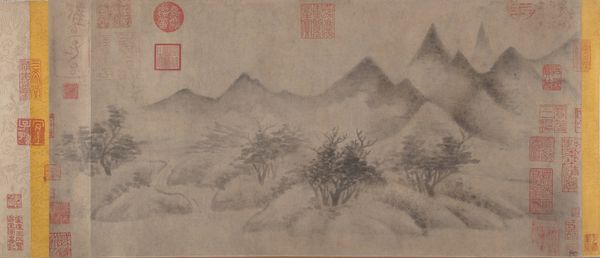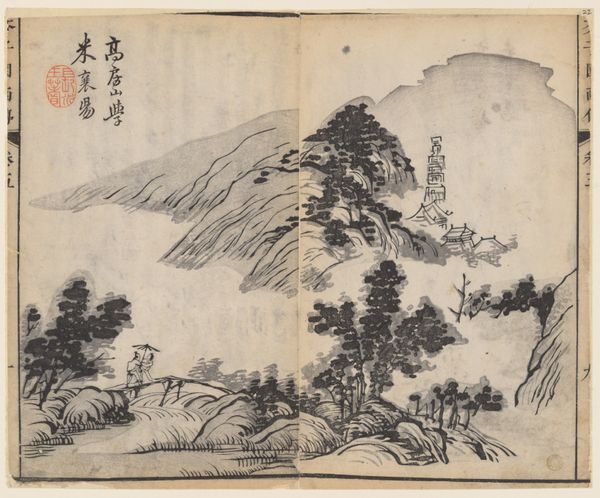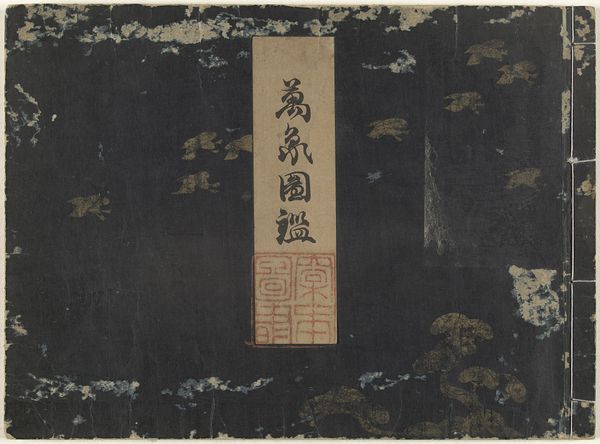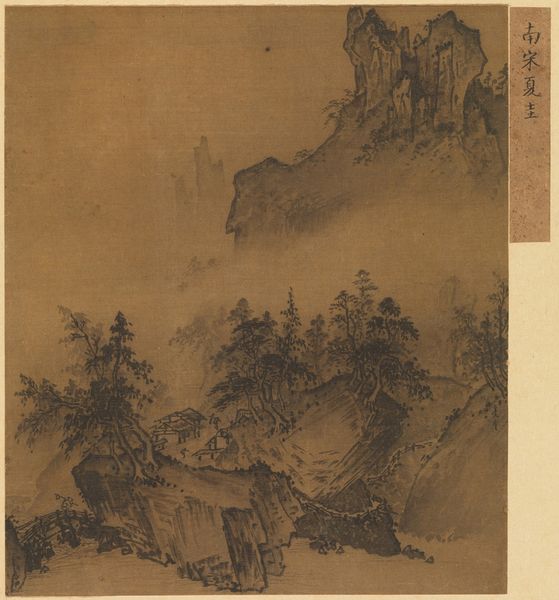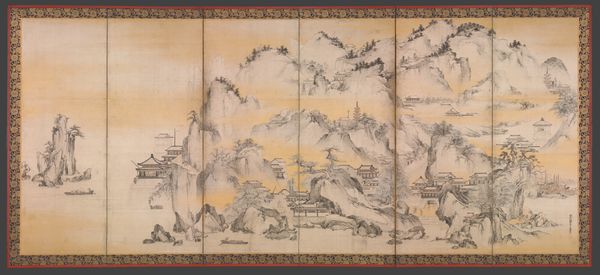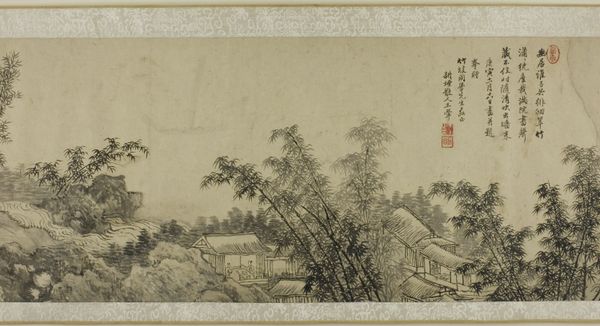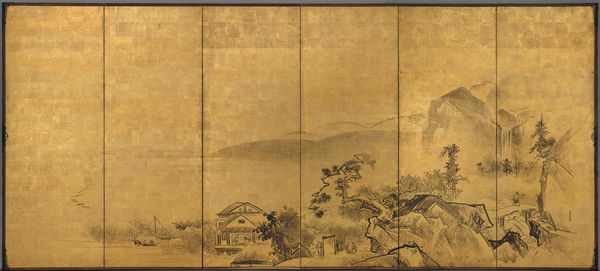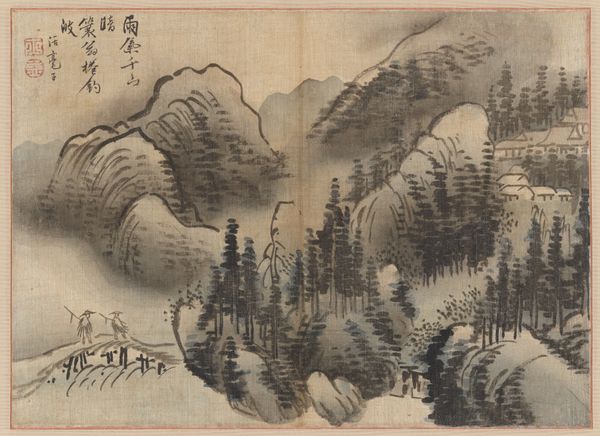
drawing, ink, architecture
#
drawing
#
asian-art
#
landscape
#
ink
#
geometric
#
ancient-mediterranean
#
architecture
Dimensions: Image: 8 1/8 x 10 1/2 in. (20.6 x 26.7 cm)
Copyright: Public Domain
Editor: This is "The Yellow Pavilion" made with ink on paper by Xia Yong between 1340 and 1360. It feels like peering into a hazy, tranquil dream; the geometric pavilion perched atop a rocky precipice just catches my breath. I am also intriged by the emptiness or negative space. What pulls your eye? Curator: Oh, the pavilion, certainly! It reminds me of a stage set, doesn’t it? As if the world is this vast, ochre-tinted canvas waiting for a drama to unfold. The artist, Xia Yong, leaves much unsaid, whispering secrets with ink washes. Notice how he places the architecture not as a demonstration of power but nested almost organically, on the landscape like a bird nesting its young? The pavilions seems nestled as part of a very intricate dance with nature. What sort of drama, or even serenity, do you suppose the artist envisioned when crafting this piece? Editor: It's interesting how you point out the natural setting of the pavilion. The starkness of the pavilion against nature feels almost… deliberate, and slightly philosophical. But I keep getting drawn back to the emptiness. Do you think that was common at that time, in painting? Curator: Deliberate, yes! It mirrors a Taoist aesthetic – that embracing of emptiness to allow for contemplation and connection. Instead of filling the canvas, he is making space for our imagination. As for its prevalence, well, it's like jazz: the silences are as important as the notes. Not every artist employed it so profoundly. What sort of connections do *you* feel as you examine this gorgeous space? Editor: Now I'm thinking that it seems less stark and more like a space inviting quiet reflection! Looking at it that way kind of brings me a sort of unexpected peace, even looking at it here! I appreciate that "jazz" comparison! Curator: See? Art reveals itself to those who are willing to listen.
Comments
No comments
Be the first to comment and join the conversation on the ultimate creative platform.


